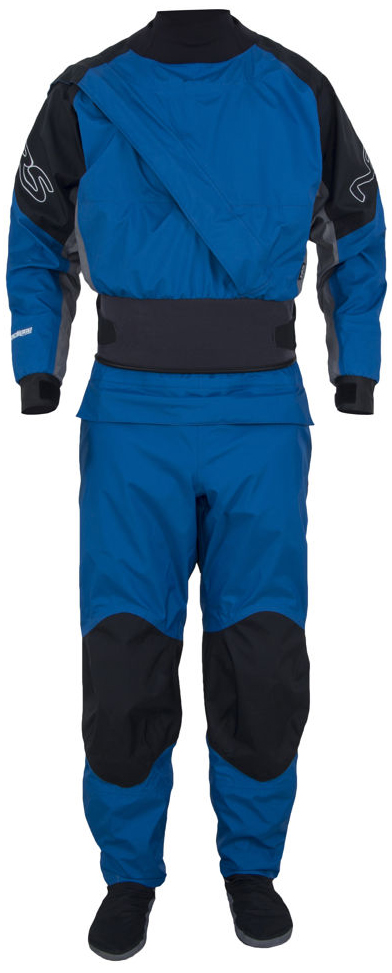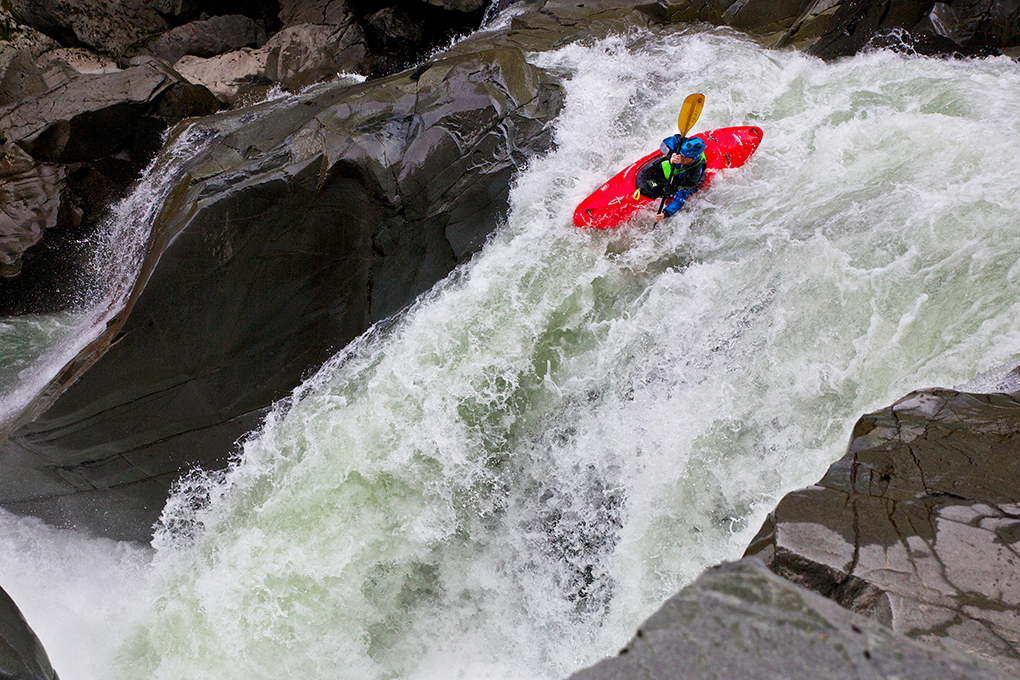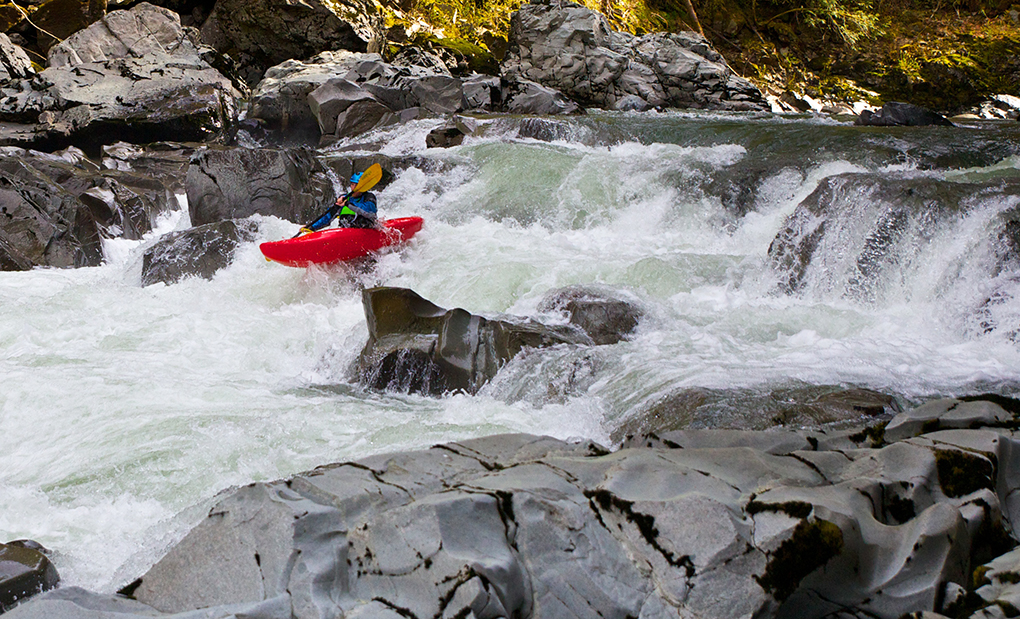
NRS Crux Drysuit
MSRP: $990
Material: 4-layer Eclipse waterproof/breathable fabric
Size tested: Large
Reviewer stats:
- 5’10, 165 lbs.
- 30″ inseam
- Size 9 feet
- 71″ arm span
Days Tested: 16
Locations Tested: Gore Canyon, Glenwood Wave, Robe Canyon, Skykomish River, Top Tye River, Arkansas River
Whether it’s a frigid midwinter day, or even a hot summer day paddling in bone chilling snow melt, the drysuit is becoming an increasingly popular option for cold water boating.
This spring, I’ve been testing the new NRS Crux Drysuit. The suit features some major upgrades from its predecessor, the Inversion. At $990, the suit is slightly cheaper than some other top end models (Kokatat GORE-TEX models, IR Supermodel, Sweet Intergalactic), but still carries quite a hefty price tag compared to “budget” suits (Level 6, Stohquist AMP).
Design & Features
The Crux is a front entry drysuit, meaning that you enter through the waterproof zipper on the front of the suit. This comes with certain drawbacks and benefits. The front entry makes it easier than a rear entry suit to zip the suit closed without help. On the other hand, it complicates the design of the suit’s double tunnel, and tends to allow more water to seep into the boat through the tunnel than a rear entry suit might. I find this to be a minor issue, especially when creek boating. I can easily spend several hours on the water without significant seepage.
And although I have noticed slightly more leakage while playboating than creeking, I still have not found it to be a huge issue. In my experience, all double tunnels will let water into the boat with enough pressure. Personally, I appreciate the ability to take off my own suit without needing to be a contortionist or master yogi.
The zipper on the Crux is a metal tooth, waterproof zipper. It is important to keep this zipper clean because minor damage to the metal teeth can necessitate a complete replacement of the zipper, and that will cost you some big money if it is not deemed a warranty issue.
The Crux also has a relief zipper, as all drysuits should, so you won’t need to strip off your entire kit in order to take a whiz. Like the entry zipper, the relief zipper is protected from the elements by a small flap of fabric. Unfortunately for any ladies out there, the Crux does not come with a drop seat option, so learn to love the pee funnel if you decide to purchase this suit. (Also check out Jane Koopman’s review of Kokatat Women’s Meridian Dry Suit, which has a drop seat.)

NRS has upped their game with the Crux by now placing a soft neoprene over cuff to protect the suit’s neck gasket (say goodbye to velcro around your neck). This is a great upgrade, and I find the neck on the Crux to be much more comfortable than the neck on the Inversion.
For some reason, NRS has kept the velcro over cuffs on the wrists. This isn’t a huge deal, but I personally prefer the neoprene wrist over cuffs found on Kokatat dry suits.
The over cuffs around the ankles are also adjusted with velcro straps, which I like, since they can be opened up wide, making the suit easy to take off at the end of the day. At the same time, I’ve found that these straps tend to come undone when hiking through mud or underbrush, allowing the cuffs to drag in the dirt. I’ve experienced the same issue with other suits during hikes, but those with a slimmer fit around the ankles/cuffs don’t not tend to drag in the mud as much when their straps do come undone.
Another major improvement that NRS has added to the Crux is breathable waterproof booties instead of using the latex booties found on the Inversion. The fabric fits better in my shoes, and is more durable, more comfortable, and breathable. I find breathability to be important on my feet so that I don’t end up with sweat-soaked socks at the end of the day. I wear wool socks inside of the booties on my Crux, and have found that the fabric breathes well enough that my socks hardly get damp by the end of the day. I should specify that this was the case when wearing the 5.10 Water Tennies and Astral Rasslers, but I imagine that the breathability of the fabric would be negatively impacted when wearing neoprene booties. Nonetheless, these booties are a significant upgrade over the non-breathable, less durable latex booties on the Inversion.
One feature that I wish the Crux had is a waist cinch. My Kokatat Meridian has a bungee cord that runs through the fabric at the waist. This keeps the Meridian from falling down to my ankles when not wearing the upper half of the suit. With the Crux, I have to continue tying the arms of my suit tightly around my waist to keep it from falling all the way down. This can be solved by leaving the tunnel fastened when the suit is pulled down around your waist, but I miss the bungee of the Kokatat.

Dryness / Waterproofing
This is obviously the most important factor in a how a drysuit performs, and I have not had any issues so far with the Crux. I am happy to report that the NRS’ proprietary 4-layer Eclipse fabric has kept me completely dry while being breathable enough that I’m not damp (or drenched) from sweat after strenuous portages or paddling in warmer temperatures. It is a great feeling to unzip the Crux at the takeout and have dry fleece underneath. I’ve had a tiny bit of dampness around my neck and wrists, but that is simply due to the fact the latex gaskets are bound to leak a little bit under high water pressure, no matter what suit you’re wearing.
Despite being a front entry suit, I haven’t had any issues with water entering the kayak through the skirt tunnel (which can occur because the front entry zipper must run through the skirt tunnel). Just the other day, I got pummeled in a big hole during a high water run in Washington, and came away with a mostly dry boat. I think this speaks volumes about how well the skirt tunnel on the NRS keeps the skirt from riding down and letting water into the boat. In fact, I would go so far as to say that the skirt tunnel on the Crux is outperforming my Kokatat Meridian in terms of how much water it allows into my boat. A rear entry suit will typically outperform any front entry suit in this respect, but the Crux is holding its own.

Hi David, could you comment on the breathability differences between the NRS crux and Kokatat GMER. You mentioned the durability and thickness between the two, but never directly compared the breathability. That would really be my deciding factor on upgrading to a GMER. Thanks, and great review!